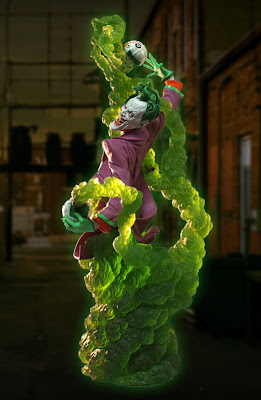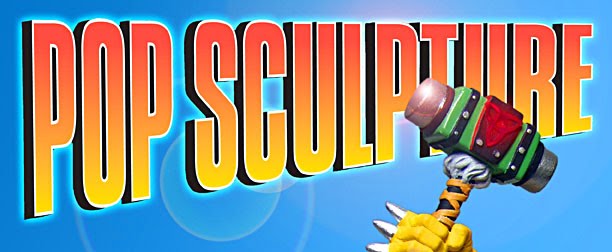I promised this a few months ago, when I spotlighted
Tim Bruckner's upcoming projects, but I wanted to shine the spotlight on a couple of my other co-author Rub
én Procopio's in-the-works works! The former Disney animator (and provider of Pop Sculpture's bottomless supply of illustrations) has some beautiful items coming out that showcase both his traditional and digital sculpting, and it was seeing
Tron: Legacy and a kick-ass new trailer for
Green Hornet that finally inspired me to get off my duff and write something.
Rub
én does work for several companies, but I first became a fan of his work through Electric Tiki. He handles much of the creative duties on their Classic Heroes line, and now that the company has the Disney license, the line is firing on all cylinders. His glow-in-the-dark statue of Tron from the original Tron from the original movie (created digitally, of course) should hit stores early next year, as well as the statue of Woody from Toy Story that he created from the original digital files.
I'm psyched for both of those, having really enjoyed Tron: Legacy and Toy Story 3, but I'm also looking forward to Rub
én's Classic Heroes take on Doc Savage. Despite having only read a couple of Doc Savage books and a handful of comics, I've still got a weird love of this character, and have been meaning to go back and watch the movie they made about him. This piece looks great, although I kinda wish Rub
én had gone with his other concept sketch, of
Doc riding a shark, because that's just insane.
Rub
én must really be feeling the
Tron nowadays, because he's also creative director of Grand Jester's line of Disney busts, which has just added that movie's Flynn, complete with jai-alai hand, to their line-up, along with Prince Dastan from
Prince of Persia.
Flynn is based on Rub
én's design but sculpted by Dave Cortes, but Rub
én handled design
and sculpting duties on Dastan. Both should be coming out next year.
Rub
én also worked on the digital sculpts for Factory Entertainment's classically styled Green Hornet and Kato action figures, which will act as companions to their toys based on the new Seth Rogen movie, which hits next year. Can't wait -- for the movie and these toys!
Another Electric Tiki piece, this sexy Tinkerbell (designed by Tracy Mark Lee, but sculpted by Rub
én), is part of
a line of sexy animated Disney leading ladies, including the Little Mermaid, Sally from
Nightmare Before Christmas and Minnie Mouse. That's right, a sexy Minnie Mouse.
And finally, I can't believe this isn't out yet, but Rub
én handled sculpting chores on this awesome animated-style maquette of Spike from
Buffy the Vampire Slayer. With vamp and non-vamp heads! I love that Electric Tiki is doing this line, and I hope it continues. With Rub
én on sculpts!
Most of these pieces are available through
Sideshow Collectibles.






































































